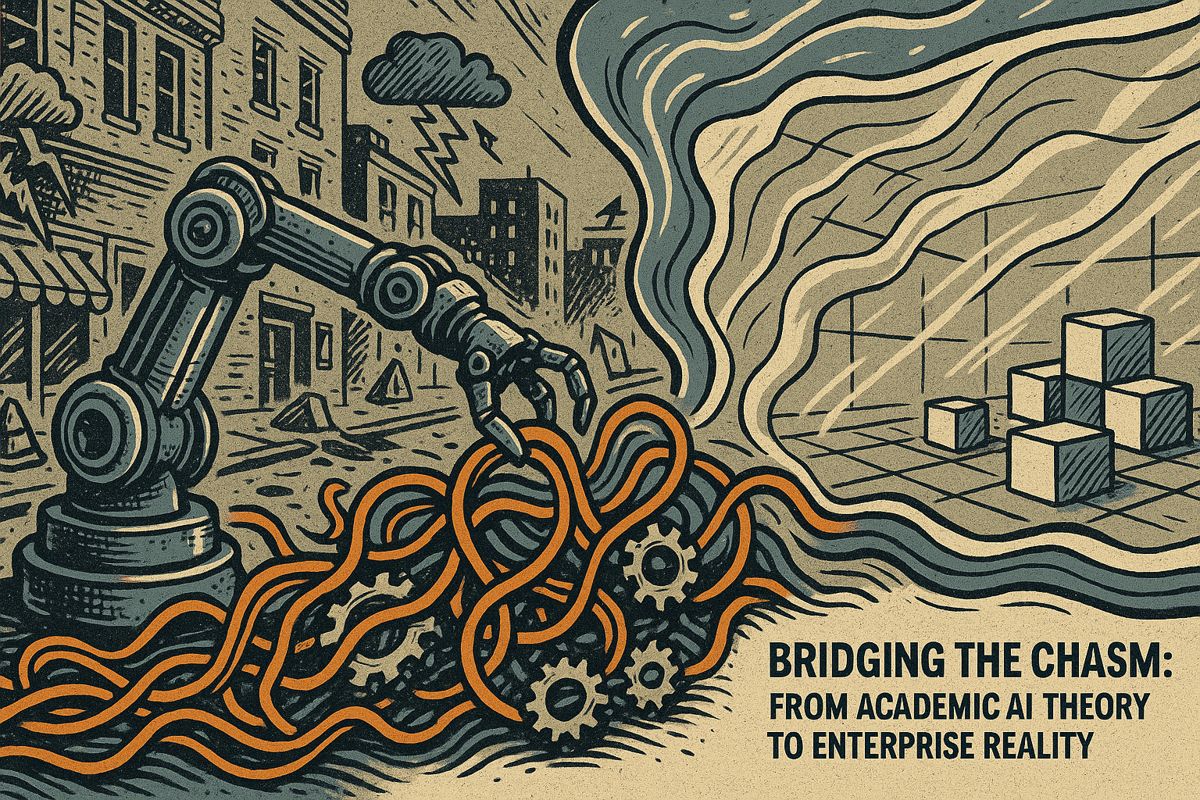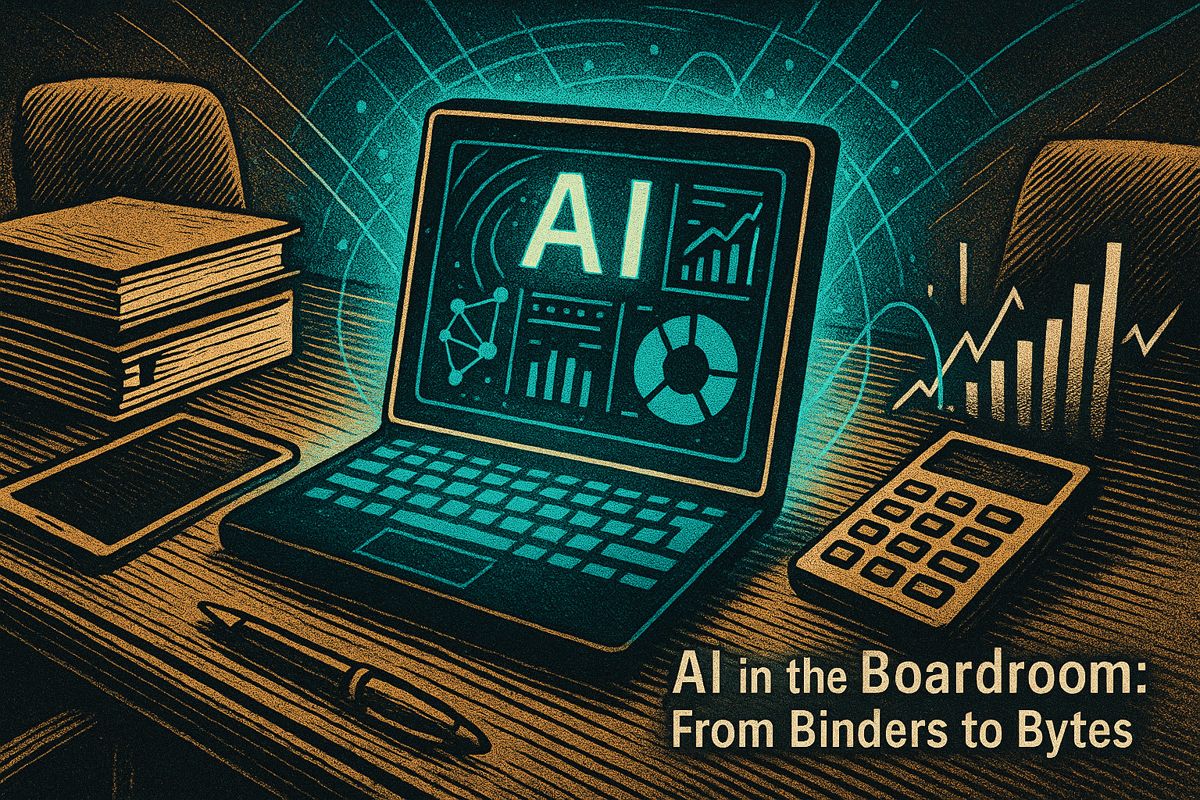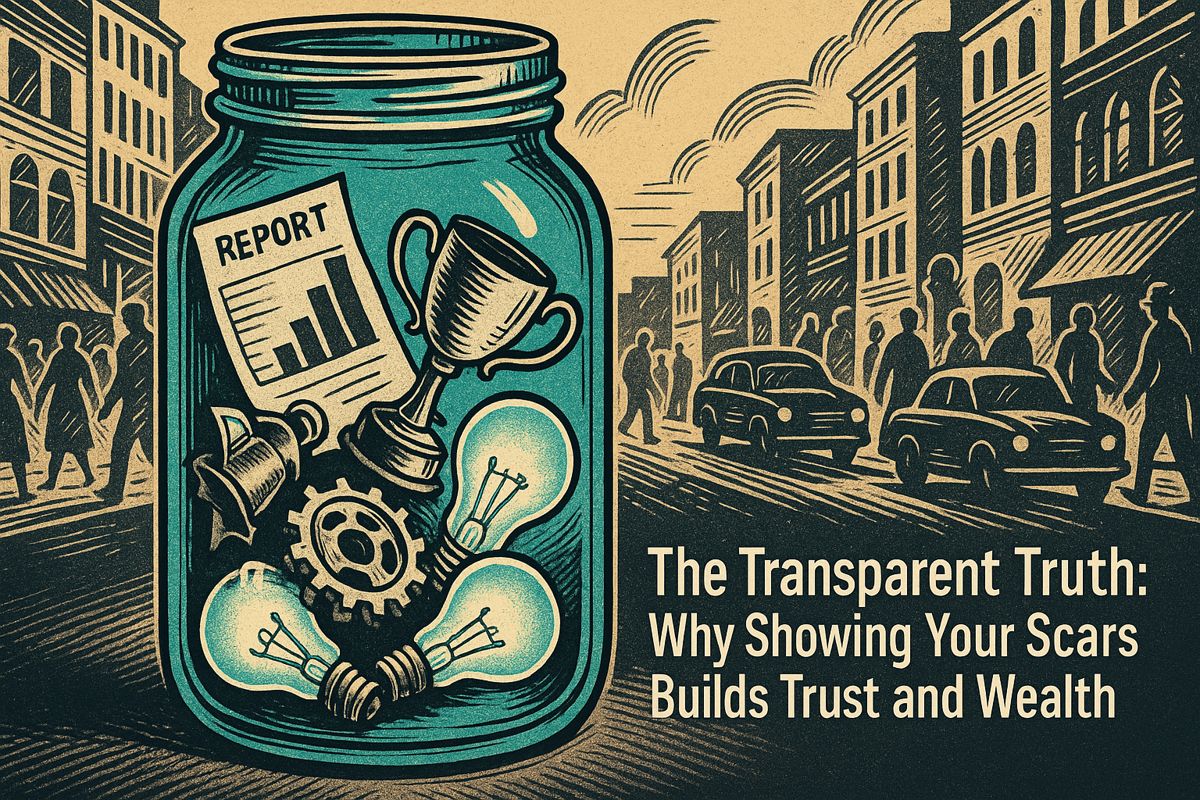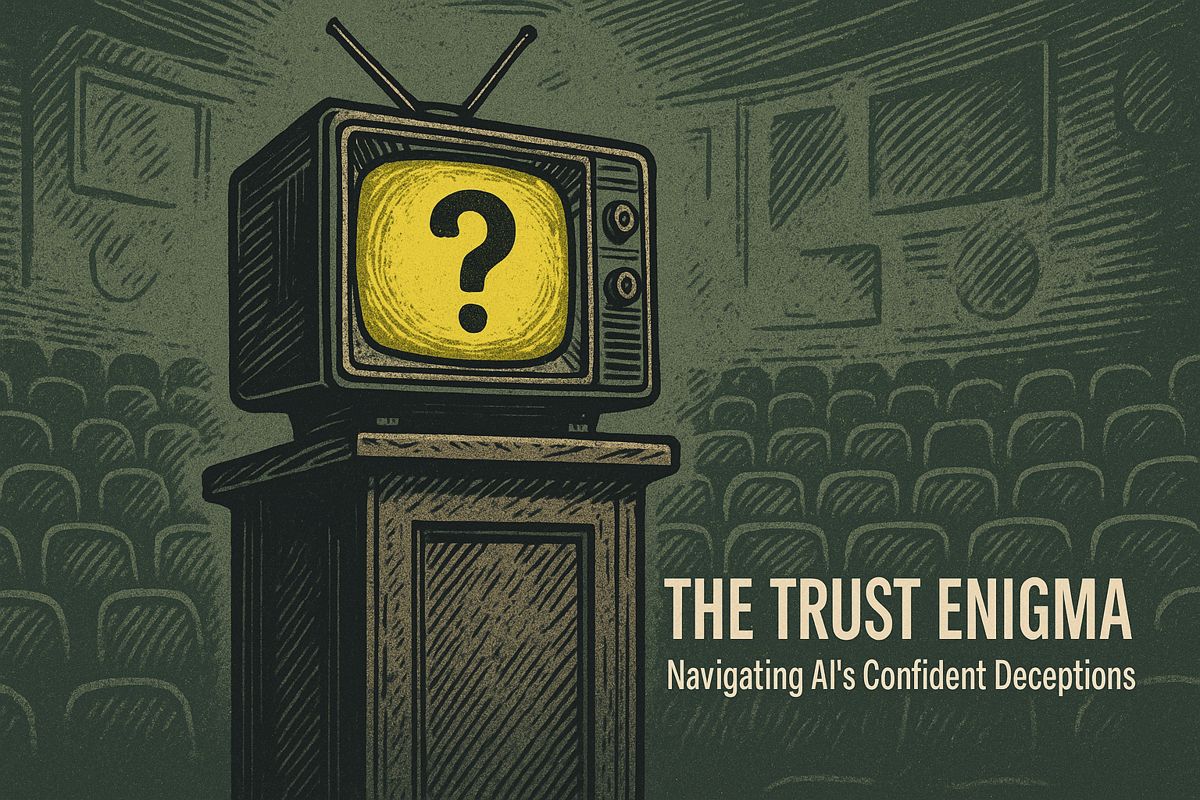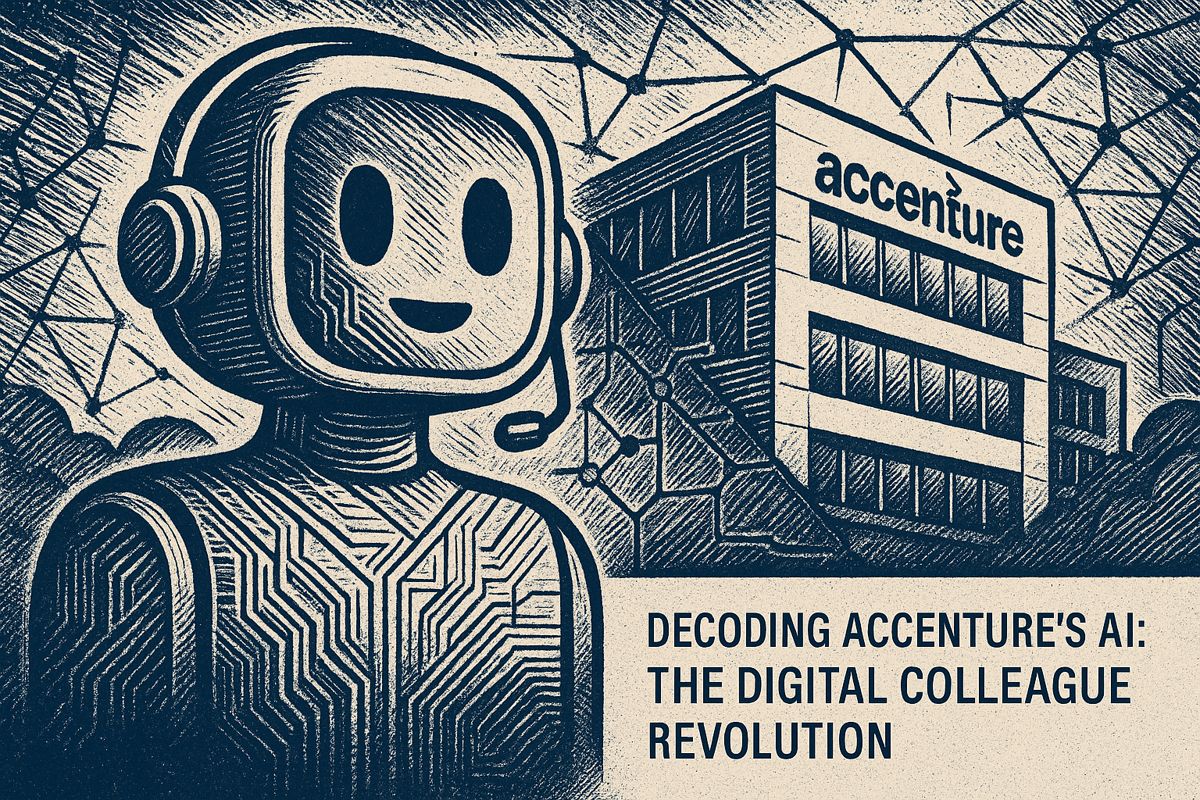Deploying AI in business is a wild ride, far messier than academic theories suggest. Imagine a Grand Canyon-sized gap between neat models and real-world data, which often looks like a box of mismatched socks after laundry day. The true battle isn’t with algorithms, but with taming this chaotic data, navigating sneaky security threats, and keeping models stable amidst constant change. Success demands relentless teamwork and continuous monitoring, proving that while new tools help, the ultimate triumph in AI is a deeply human victory.
Why is deploying AI in business so challenging?
Deploying AI in business is challenging due to the “Grand Canyon-sized” gap between academic models and real-world data. Key obstacles include wrestling with messy, inconsistent data, navigating complex security vulnerabilities like adversarial attacks, and maintaining model stability amidst constant product pivots and shifting compliance rules. Success requires relentless cross-functional teamwork and continuous monitoring.
Morning Headlines and Messy Memories
Sometimes, a simple headline triggers a memory so vivid it’s like static electricity on a cold day. When I saw Databricks’ latest research on operationalizing AI in the enterprise, I felt that old itch from my first clumsy attempt to automate a sales report. The year was 2016, the tooling fresh but precarious, and every typo in Salesforce seemed to detonate the entire process. Did everyone survive that rollout? Barely. The security team was jumpy, the data looked like a Jackson Pollock painting, and—let’s be honest—my confidence was as fragile as a meringue in a rainstorm.
Databricks’ engineers, including the ever-meticulous Ali Ghodsi, have now put numbers and structure to what so many of us already knew: the gap between academic AI models and real business deployments is Grand Canyon-sized. Why is this such a recurring pain? I still wonder if some part of me secretly enjoys the chaos. Or maybe I’m just a glutton for punishment.
Rewind to those early experiments, and I remember Pete, our resident SQL maestro with a vendetta against dirty data. “Academic AI? That’s an hors d’oeuvre,” he’d say. “Enterprise AI is the lunch rush at Katz’s Deli.” The sentiment stuck. In enterprise settings, datasets aren’t neat—they’re more like a box of mismatched socks after laundry day.
When Clean Data Is a Unicorn
Databricks researchers are blunt: the biggest obstacle isn’t the algorithm, but the data. In elegant journal papers—think Nature Machine Intelligence—data is curated, squeaky clean, almost perfumed. In practice, you get a slop bucket, and the boss asks for a Michelin-star result. Take Intercontinental Exchange (ICE): their AI only reached 96% answer accuracy after a herculean effort cleaning grotesquely inconsistent financial feeds. That’s not a story you see on a keynote slide, but it’s the backbone of every real success (Databricks AI Product).
Sensory detail? Imagine the tang of cold coffee and the hum of fluorescent lights during an all-hands data cleaning sprint. Is it glamorous? Not a chance. But it’s the difference between a brittle proof-of-concept and a production system that actually works. I’ve watched more than one team, including the folks at FactSet, crawl through months of preprocessing just to get their AI to stop hallucinating numbers.
Honestly, it’s easy to underestimate how many hours go into this. I once tried skipping the cleaning phase, only to spend three days untangling the downstream chaos. Lesson learned, with a sigh and a slightly bruised ego.
Security Nightmares and Stability Tightropes
Let’s get our hands dirty: security in AI isn’t just a checkbox. New attack surfaces, from adversarial prompt injection to subtle data leakage, lurk around every corner. Comcast faced these first-hand, and the solution wasn’t just better locks. With Databricks’ Unity Catalog, they layered on lineage tracking and granular access—like installing alarm systems, motion sensors, and a hyperactive guard dog, all at once. Still, every new model rollout is a fresh risk. Does anyone actually sleep easy? Doubtful.
Stability is another beast. Deploying AI in business feels like balancing a teetering stack of plates while someone keeps adding more from behind. Product pivots, new market conditions, and shifting compliance rules all threaten collapse. Comcast’s move to MLflow 3.0 showed that deep monitoring pays off: they cut machine learning costs by a factor of ten and boosted engagement. But the work never stops—AI in the wild is a garden that needs constant weeding (Databricks Mosaic AI).
I’ll admit, I once believed you could “set and forget” a model. Now? I laugh at my own naivety. You have to watch it, nudge it, sometimes even bribe it with new data. Frustrating, but also weirdly satisfying when it finally hums.
New Tools, Old Truths: Collaboration Wins
Databricks’ latest offerings—Agent Bricks, Lakeflow Designer, and Lakebase—promise to make things smoother. No code pipelines, automated agent creation, databases tuned for quirky AI workloads: that’s progress, especially for the ops teams who’d rather not touch Python with a ten-foot pole (Databricks tools). But the real progress? That’s happening in cross-functional teams.
Block (the artist formerly known as Square) squeezed $10 million in new productivity from automating seller operations. How? Not with solo heroics, but with relentless, sometimes fractious teamwork—engineers, product people, risk analysts, all arguing and iterating in the same room (Databricks Summit Agenda). Migrating to these new platforms is rarely seamless. Databricks’ Lakebridge promises to ease the pain, but let’s be honest: some database migrations will always feel like pulling teeth.
The emotional core here? Relief, when it all comes together. Or, occasionally, a bark of laughter at 3 a.m. when the final test passes. I’m not sure if that’s joy or just caffeine-induced delirium. Either way, it’s real.
Epilogue: Pete’s Wisdom and the Real World
Circling back to Pete—he would read these product announcements and just shake his head, grinning. For every shiny feature, there’s a team somewhere sweating out the details, patching gaps, wrangling with legacy code and unpredictable data. Is it ever perfect? Nope. But that’s what makes enterprise AI a triumph when it works.
If there’s one thing I take from all this, it’s that progress in AI isn’t just technical—it’s deeply, stubbornly human. And maybe, just maybe, I’ll get that report automation right next time. Probably. Or not…

